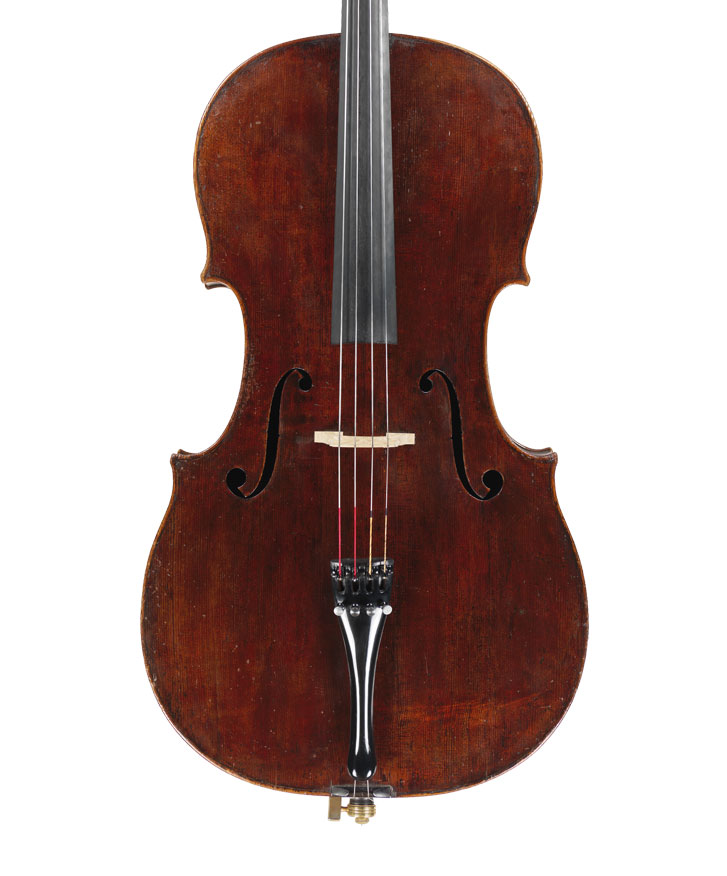Cello by
Giovanni Battista Grancino
Milan, 1712
The Grancino family were the dominant violinmakers of 17th century Milan. Giovanni Grancino (b. 1637 – d. 1709) and his son Giovanni II (b. 1673 – d. after 1723) were responsible for the vast majority of the family’s output. The elder Giovanni most likely trained in the workshop of his father, Andrea, located in the Contrada Larga under the sign of the crown, or “al Segno della Corona” as the Grancinos indicated on their instrument labels. Giovanni I initially worked with his younger brother Francesco, although Francesco’s actual level of participation is not fully known outside of a few instruments (mostly violas) that bear both brothers’ names. Although there is no direct historical connection between Cremonese and Milanese makers of the time, the influence of the Amati family is strongly present in the instruments produced by the Grancinos.
The Grancino family remained at the same workshop for their entire lives, with the exception of Giovanni II, who was forced to flee Milan in 1708 after a series of dramatic altercations with fellow violinmaker Antonio Maria Lavazza. Giovanni II injured Lavazza at their final encounter, purportedly in self defense, and was charged with murder when Lavazza died a few days later. Giovanni II escaped and lived in exile, but eventually was allowed to return to the city and continue working. Instruments such as this exceptional cello, which bear the label of the father but are dated after his death in 1709, are the work of the younger Giovanni. This cello offers the musician a robust and sonorous tone and has been the primary performing instrument of a prominent musician for the last decade.






